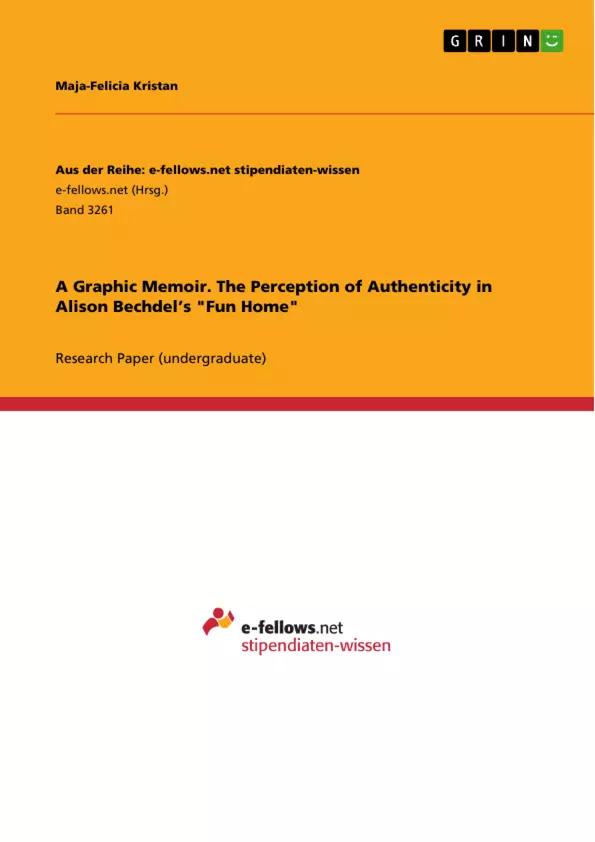This work analyzes the perception of authencity in "Fun Home". Alison Bechdel’s "Fun Home" from 2007 is a graphic memoir that tries to create a sense of truthfulness to the reality of the author’s memories by employing various means. This paper examines the techniques Bechdel uses for the creation of what may look for the reader like authenticity. By using for example Philippe Lejeune’s autobiographical pact the text closely analyzes the presentation of text and image concerning the protagonist Alison and the narrating voice as well as the role of photographs in the text. By investigating the protagonists self-portrayal through text and images this paper tries to point out the successfulness of appearing truth of the story as well as distinguish in which instance a disruption of before identified means in form of fictionalization can be found in the text and how this influences the perception of its authenticity.
The second part of the paper then focuses on photography as another means to invoke a perception of truthfulness in the text with special attention to photography as means of memory and truth, based on theories by Roland Barthes and Marianne Hirsch as well as its possible fictionalization through the confines of the graphic novel genre and its significance in relation to the text’s authenticity.
Inhaltsverzeichnis (Table of Contents)
- Introduction
- Autobiographical writing
- Verbal representation
- Visual representation
- Fictionalization
- Documents
- Photographs
- Letters and Diary
- Conclusion
- Works Cited
Zielsetzung und Themenschwerpunkte (Objectives and Key Themes)
This paper examines the perception of authenticity in Alison Bechdel's graphic memoir, *Fun Home*, by exploring how Bechdel uses various literary and visual techniques to create a sense of truthfulness for the reader while simultaneously acknowledging the inherent fictionalization of memory.
- The role of self-reflexivity in autobiographical writing
- The relationship between memory and fiction
- The impact of visual representation on the perception of authenticity
- The use of documents as evidence of past events
- The construction of identity in relation to family history
Zusammenfassung der Kapitel (Chapter Summaries)
The introduction explores the complexities of autobiographical writing, particularly the tension between factual truth and emotional truth. It examines how Bechdel uses various means of self-reflexivity to acknowledge the subjectivity and unreliability of memory.
The chapter on autobiographical writing discusses the autobiographical pact and how Bechdel employs it in *Fun Home*. It also delves into the distinction between the narrated 'I' and the narrating 'I' in the text, exploring how Bechdel uses these two perspectives to create a sense of distance between her past and present selves.
The section on verbal representation examines how Bechdel uses dialogue and interior monologue to portray the different stages of Alison's childhood. The chapter on visual representation focuses on how Bechdel's use of graphic novel elements, such as paneling and visual style, contribute to the perception of authenticity in the text.
The chapter on documents discusses how Bechdel uses photographs, letters, and other artifacts to create a sense of historical veracity. It explores the relationship between memory, truth, and representation, drawing on the theories of Roland Barthes and Susan Sontag.
Schlüsselwörter (Keywords)
Autobiographical writing, graphic memoir, perception of authenticity, self-reflexivity, memory, fiction, visual representation, documents, photographs, letters, diary, family history, identity, emotional truth.
- Quote paper
- Maja-Felicia Kristan (Author), 2018, A Graphic Memoir. The Perception of Authenticity in Alison Bechdel’s "Fun Home", Munich, GRIN Verlag, https://www.grin.com/document/499403



